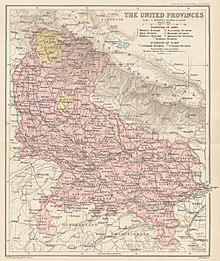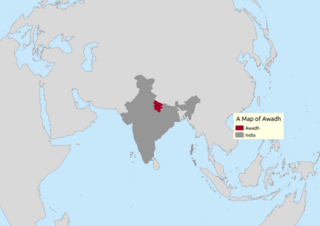
Awadh, known in British historical texts as Avadh or Oudh, is a historical region in northern India, now constituting the northeastern portion of Uttar Pradesh. It is roughly synonymous with the ancient Kosala region of Hindu, Buddhist, and Jain scriptures.

The United Provinces of Agra and Oudh was a province of India under the British Raj, which existed from 1902 to 1937; the official name was shortened by the Government of India Act 1935 to United Provinces (UP), by which the province had been commonly known, and by which name it was also a province of independent India until 1950.
Events in the year 1857 in India.

Faizabad is a city located in Ayodhya district in the Indian state of Uttar Pradesh. It is situated on southern the bank of the River Saryu about 130 km east of state capital Lucknow. Faizabad was the first capital of the Nawabs of Awadh and has monuments built by the Nawabs, like the Tomb of Bahu Begum, Gulab Bari. It was also the headquarters of Faizabad district and Faizabad division before November 2018. Faizabad is a twin city of Ayodhya and it is administered by Ayodhya Municipal Corporation.

Bulandshahr, formerly Baran, is a city and a municipal board in Bulandshahr district in the state of Uttar Pradesh, India.

The North-Western Provinces was an administrative region in British India. The North-Western Provinces were established in 1836, through merging the administrative divisions of the Ceded and Conquered Provinces. In 1858, the Nawab-ruled kingdom of Oudh was annexed and merged with the North-Western Provinces to form the renamed North-Western Provinces and Oudh. In 1902, this province was reorganized to form the United Provinces of Agra and Oudh. Allahabad served as its capital from 1858, when it also became the capital of India for a day.
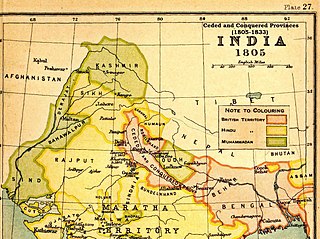
The Ceded and Conquered Provinces constituted a region in northern India that was ruled by the British East India Company from 1805 to 1834; it corresponded approximately—in present-day India—to all regions in Uttar Pradesh state with the exception of the Lucknow and Faizabad divisions of Awadh; in addition, it included the Delhi territory and, after 1816, the Kumaun division and a large part of the Garhwal division of present-day Uttarakhand state. In 1836, the region became the North-Western Provinces, and in 1904, the Agra Province within the United Provinces of Agra and Oudh.

Situated in the northern part of India, bordering with the capital of India New Delhi, Uttar Pradesh is one of the most popular and an established tourist destination for both Indians and non-Indians alike in India. The most populous state of India, Uttar Pradesh contains many historical monuments and places of religious significance. Geographically, Uttar Pradesh is very diverse, with Himalayan foothills in the extreme north and the Gangetic Plain in the centre. It is also home of India's most visited sites, Hinduism's holiest city, Varanasi. Kumbh city, Prayagraj. Kathak, one of the eight forms of Indian classical dances, originated from Uttar Pradesh. Uttar Pradesh is at the heart of India, hence it is also known as The Heartland of India. Cuisine of Uttar Pradesh like Awadhi cuisine, Mughlai cuisine, Kumauni cuisine are very famous not only in India but also many places abroad and Pratapgarh is also famous for Rajputana.
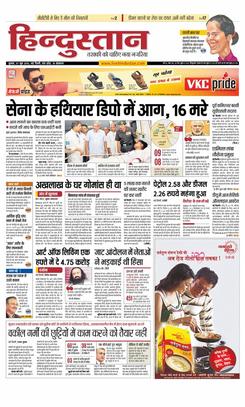
Hindustan Dainik is an Indian Hindi-language daily newspaper. According to WAN-IFRA, it ranked 13th in the world by circulation in 2016 and per the Audit Bureau of Circulations was 6th in India in 2022. Madan Mohan Malaviya launched it in 1936. It is published by Hindustan Media Ventures Limited. Earlier it was part of HT Media Ltd group, which spun off its Hindi business into a separate company named Hindustan Media Ventures Limited in December 2009.

Christianity is a small minority in Uttar Pradesh, the largest state of India. Uttar Pradesh is within the territory of Lucknow and Agra Diocese of Church of North India and of the Archdiocese of Agra and Uttar Pradesh Christian Revival Church (UPCRC) has started on 09.07.2017 Christian Revival Church.
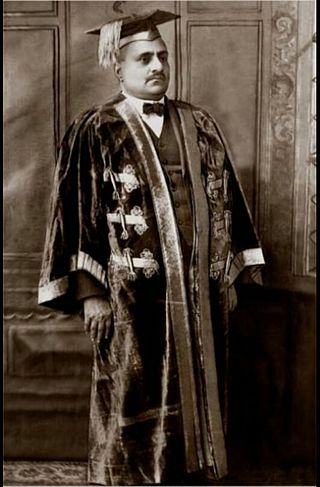
General elections were held in British India in 1920 to elect members to the Imperial Legislative Council and the Provincial Councils. They were the first elections in the country's modern history.
General elections were held in British India in November 1923 for both the Central Legislative Assembly and Provincial Assemblies. The Central Legislative Assembly had 145 seats, of which 105 were elected by the public.

Jhansi Junction railway station (JHS), officially Virangana Lakshmibai Jhansi Railway Station (VGLJ), is a major railway junction in the city of Jhansi in Bundelkhand region of Uttar Pradesh. It is one of the busiest and largest railway stations in India. It hosts various trains of Indian Railways like the Gatimaan Express, which is the fastest train of India, as well as others like Bundelkhand Express. It is a major halt for various important trains of Indian Railways like five sets of Rajdhani Express bound for Mumbai, Chennai, Bengaluru, Hyderabad etc. One set of Bhopal Shatabdi Express, three Duronto Express trains, Punjab Mail one of the oldest running trains in India, Kerala Express, Karnataka Express, etc.

The Uttar Pradesh Metro Rail Corporation(UPMRC) is a joint venture company that operates the Lucknow Metro and Kanpur Metro. The UPMRC is also constructing the Agra Metro and Meerut Metro, with the Varanasi Metro, Allahabad Metro, Gorakhpur Metro and Bareilly Metro under consideration. The company is headquarters is at Vipin Khand, Gomti Nagar Lucknow
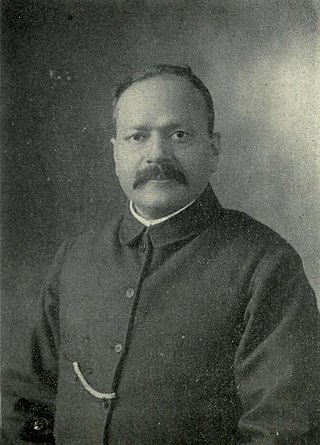
Lala Sukhbir Sinha was a noted politician, zamindar and Hindu Mahasabha leader from the United Provinces of British India.

The Oudh State was a princely state in the Awadh region of North India until its annexation by the British in 1856. The name Oudh, now obsolete, was once the anglicized name of the state, also written historically as Oudhe.

The Divisions of British India were administrative units of the Government of the British Raj or Indian Empire.

The following outline is provided as an overview of and topical guide to Uttar Pradesh:
